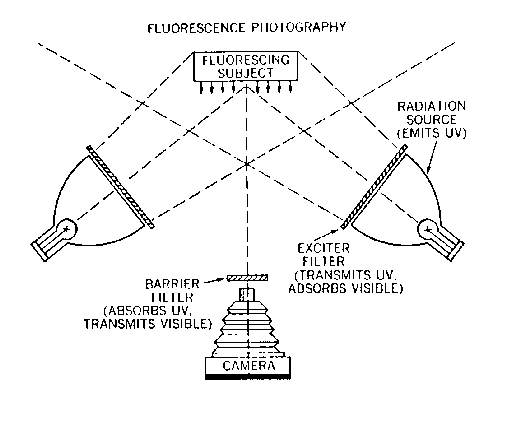Fluorescence Photography
See also the instructional videos on "Evidence Photography"
Certain radiations (including ultraviolet can be used to excite fluorescence in an object and that fluorescence can be photographed.
Uses in Law Enforcement
- Inks on questioned documents.
- Other subjects after other methods have failed.
Equipment, Films and Filters
- Camera and lens with a Kodak Wratten Filter #2A.
- Black-and-white film (color film will not work).
Receive our free monthly newsletter and/or job posting alerts Click to sign up
Lighting
- "Black light" fluorescent tube covered with a Kodak Wratten Filter #18A.
Focusing and Exposure
- Focus for visible light and then shoot for maximum depth of field to get the correct focus.
- Accurate focus and exposure for fluorescence photography requires test exposures.
Photographic Necessities for Fluorescence Photography
- The illumination of the subject should consist only of the radiations needed to excite the fluorescence. All ambient illumination (room lights) must be excluded from the subject. Most often this is done in a darkened room or light-tight enclosure.
- Use an exciter filter on the light source that transmits ultraviolet and blocks visible light.
- Use a barrier filter on the camera lens to block ultraviolet light and transmit visible light.
- The ultraviolet light will strike the subject and excite fluorescence. The fluorescence would then be recorded on the film.

References
- Kodak Basic Scientific Photography, N-9
- Kodak Using Photography to Preserve Evidence, M-2

